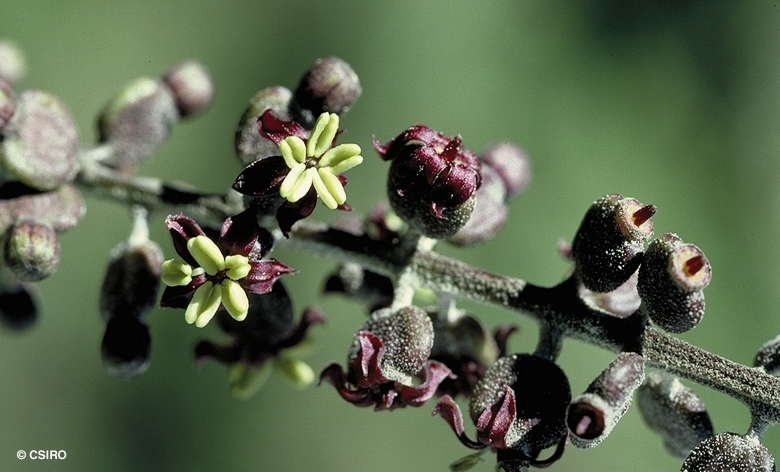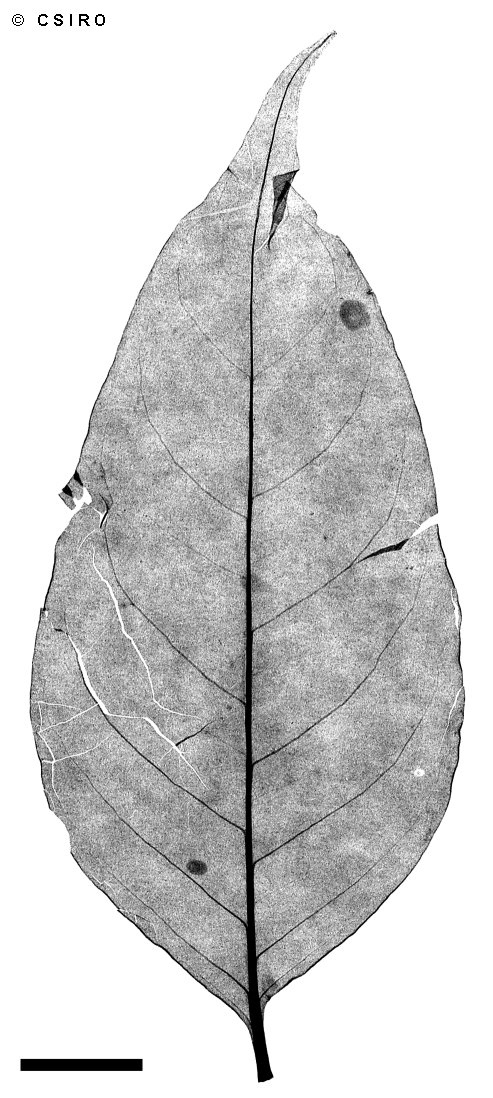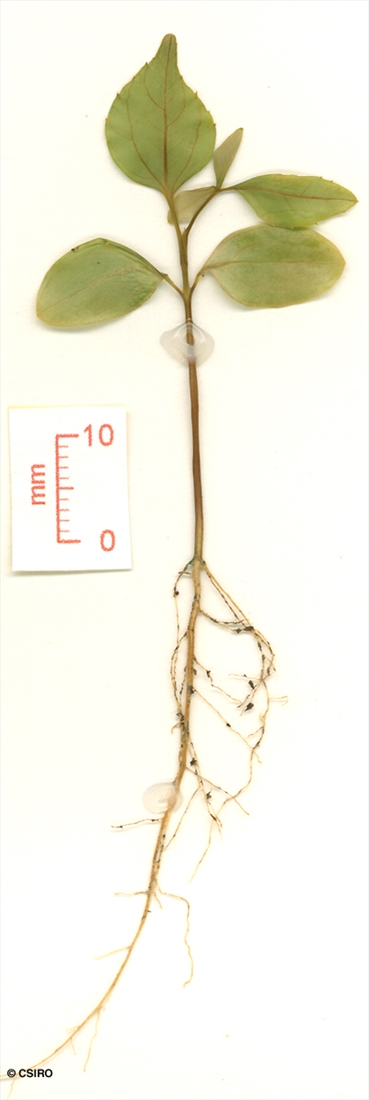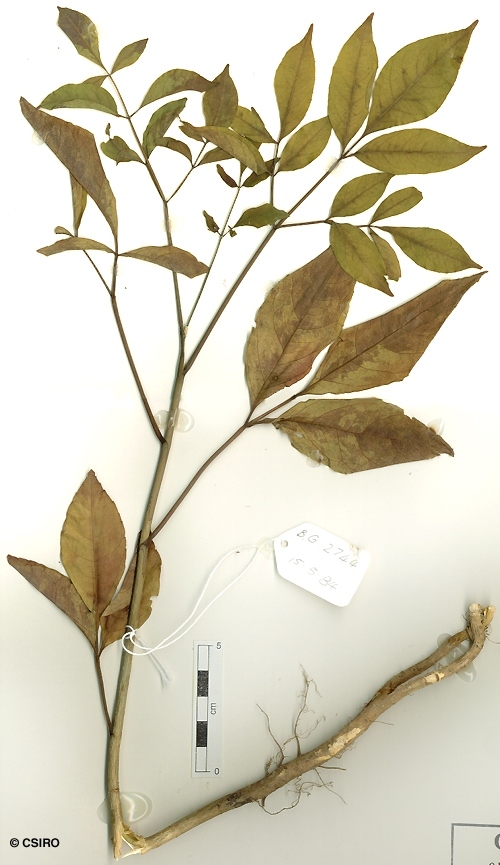Australian Tropical Rainforest Plants - Online edition
Polyscias elegans (C.Moore & F.Muell.) Harms







Harms, H.A.T. in Engler, H.G.A. & Prantl, K.A.E. (1894) Die Naturlichen Pflanzenfamilien 3(8): 45.
Silver Basswood; Black Pencil Cedar; Cedar, Black Pencil; Celerywood; Mowbulan Whitewood
Blaze odour resembles celery. Wood white, very soft and light. Brownish fibrous stripes visible in the blaze.
Cotyledons elliptic to almost orbicular, about 8-10 mm long. First leaf produced usually simple, then 4-8 trifoliolate leaves before pinnate leaves are produced. At the tenth leaf stage: leaflets +/- elliptic, apex acuminate, glabrous; terminal bud densely clothed in pale stellate hairs or scales. Seed germination time 83 to 226 days.
Widespread in CYP, NEQ, CEQ and southwards to coastal central New South Wales. Altitudinal range from near sea level to 1000 m. A characteristic tree of disturbed rain forest in the higher rainfall areas but also grows as a canopy tree in monsoon forest and drier rain forest. Also occurs in New Guinea.
Fruit eaten by several species of birds. Cooper & Cooper (1994).
Generally regarded as a rather inferior species for the production of timber. However, this species regenerates prolifically after a disturbance and each year produces large crops of fruit.





